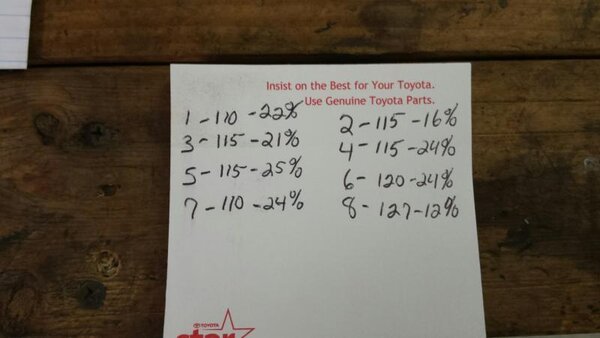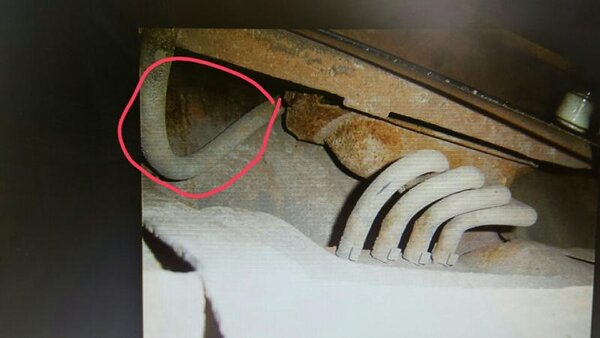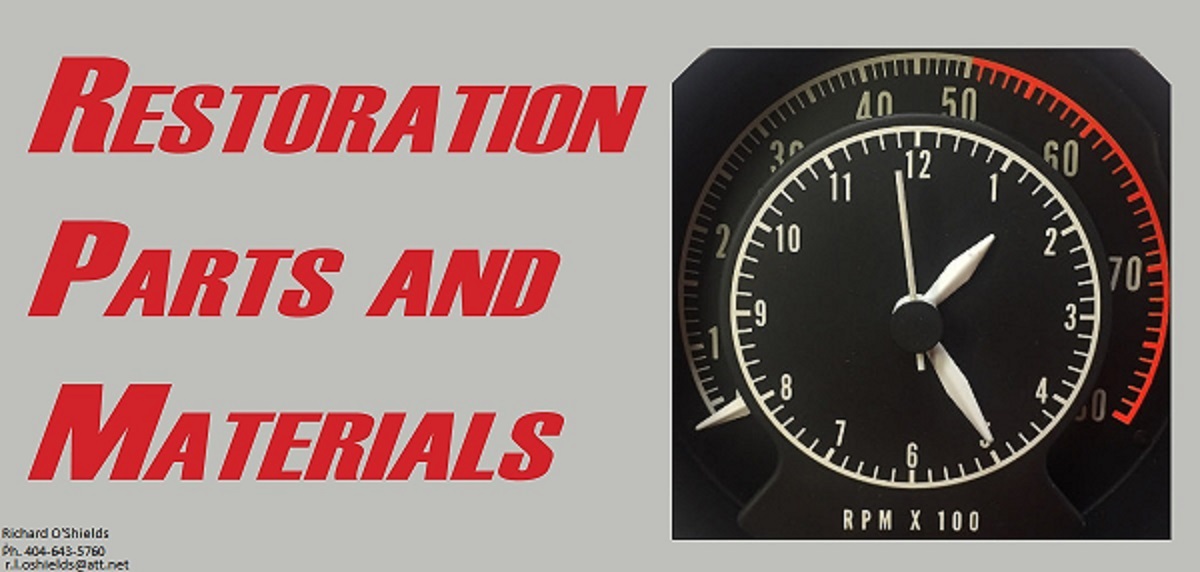You are using an out of date browser. It may not display this or other websites correctly.
You should upgrade or use an alternative browser.
You should upgrade or use an alternative browser.
throttle hesitation
- Thread starter Iceman247
- Start date
Chryco Psycho
Well-Known Member
Glad you got it solved
burntorange70
Moderator
Right on!
DetMatt1
Well-Known Member
Excellent, glad to hear.
i think it was more of the timing than anything but after i set it to 38* with out the advance i had a little to much gap between the pump arm and the adjustment bolt and spring and then i used a vacuum gauge and tuned the air mixture screws to smooth it out and i have about 13 cm of intake vacuum
moparleo
Well-Known Member
- Joined
- Oct 17, 2011
- Messages
- 7,256
- Reaction score
- 2,046
Your vacuum readings are very low. Any modifications on this engine that you know of ?
Racer57
Well-Known Member
- Joined
- Apr 30, 2013
- Messages
- 134
- Reaction score
- 18
If you have an AVS carb, tighten the air dam adjustment 1/4 turn.
i was thinking my vacuum readings were low also so i did a compression test and I'm between 110 and 125. this is a new rebuilt 1978 360 motor bored .020 flat top pistons heads have been shaved (don't remember how much) and reworked new valves and all with a 280/280, Lift .474/.474 cam.
Chryco Psycho
Well-Known Member
So you have 13 CM of vacuum or 4-5" of vacuum ? At idle in gear I assume ?
you need to install a 2.5" powervalve inside the carb for a reading that low , if the idle speed is surging that will be the power valve opening & closing .
The compression seems to be on the low side but this can be affected by a lot of things such as engine being warm , throttle open , cranking speed , duration & overlap of the cam not that yours is excessive & the piston height relative to the deck height . Even the gauge can be inaccurate but as long as the readings are within 10-15 % you are ok .
you need to install a 2.5" powervalve inside the carb for a reading that low , if the idle speed is surging that will be the power valve opening & closing .
The compression seems to be on the low side but this can be affected by a lot of things such as engine being warm , throttle open , cranking speed , duration & overlap of the cam not that yours is excessive & the piston height relative to the deck height . Even the gauge can be inaccurate but as long as the readings are within 10-15 % you are ok .
sorry i was wrong i have about 12 -13 in Hg of vacuum, but at idle in park. What do you think about these numbers: 1st # is cylinder, 2nd is compression, 3rd is leak down. i guess my thinking is the motor has less than 200 miles on it and thought the compression would be more around the 150-160 range.



Last edited:
Chryco Psycho
Well-Known Member
12" is better , probably drops off to 8" or so in drive & is about what I would expect from that cam
typically a 340 should be closer to 150 with true replacement pistons being slightly above deck , but as I said the reading could be low for any of the reasons I listed before , , the compression should also rise with more miles on it as the rings wil not have copletely sealed in yet even with a Plasma Moly ring set .
I would run it some more work it hard & retest when you have 1500 miles or more on it .
typically a 340 should be closer to 150 with true replacement pistons being slightly above deck , but as I said the reading could be low for any of the reasons I listed before , , the compression should also rise with more miles on it as the rings wil not have copletely sealed in yet even with a Plasma Moly ring set .
I would run it some more work it hard & retest when you have 1500 miles or more on it .
moparleo
Well-Known Member
- Joined
- Oct 17, 2011
- Messages
- 7,256
- Reaction score
- 2,046
When you do your compression test, do it this way. 1) lock throttle open. 2) use a remote starter button attached to the battery and starter terminals on the starter relay attached to the drivers fender well next to the battery. 3) crank the engine for 3 complete revolutions. You can do this wet and dry. This means either doing the test with a squirt of oil into the spark plug hole before you attach your compression gauge, like Marvels Mystery oil or whatever you have handy. Or crank the engine as is with nothing added to alter the readings. Crank the engine the same amount of revolutions to get a more accurate reading.
Chryco Psycho
Well-Known Member
OK this is part of the emissions added after 70 , the fuel became a sealed / non vented system so the four lines connect to a vaopr seperator , the red line probably went forward to the carbon canister under hood to reburn the fuel vapors .
Chryco Psycho
Well-Known Member
Yes & no , with no way for air to get into the tank you could create a vacuum in the tank , but you can use a vented cap if you can fine one to fit



















